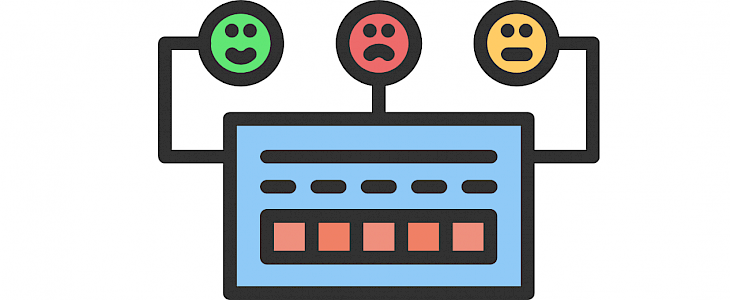
Are you looking for a way to understand what people think and feel about your business? Sentiment analysis can be of help as it allows companies to learn how their target audience perceives them and make informed decisions based on real-time feedback. By leveraging specialized tools, businesses can gain invaluable insights into customer opinions that would otherwise be impossible to uncover. In this article, we will explore why opinion mining matters, how to carry it out, as well as provide a complete list of sentiment analysis software and tips to foster positive opinions. Read on to find out how to take your company’s reputation management strategies up a notch!
Why Does Your Business Need Sentiment Analysis?
Sentiment analysis or opinion mining is an increasingly powerful tool for businesses that want to gain valuable insights into the minds of their customers. With its help, you can track satisfaction during different customer journeys and identify any weak spots along the way. This type of data is incredibly helpful in allowing you to shape customer expectations and tailor content, campaigns, and messaging that have a greater impact. Combining opinion mining with analytics from other sources will provide clear trends about what motivates customers to interact with your business more deeply.
Sentiment Analysis Essentials: 3 Basic Steps
Monitoring mentions
Monitoring mentions is the first stage of opinion mining. It involves closely following conversations across the web and finding out what people are saying about your brand or products. At this stage, your task is to collect the data and process it so that it can be further analyzed.
Monitoring mentions is also essential for measuring another important metric, which is your brand’s share of voice. A comprehensive share of voice analysis allows you to see how your brand is doing in terms of awareness and reputation as opposed to its competitors.
Analyzing sentiment in the mentions
Examining the tonality of customer responses is the heart of opinion mining and the clue to crafting meaningful relations with customers. There are several tasks involved in the data analysis stage, including
- training the model that involves classifying and labeling the data collected;
- multilingual data processing;
- creating custom tags for key themes;
- topic classification;
- analyzing opinion, where different statements receive a sentiment score ranging from -1 to +1.
Visualizing the data
Visualizing opinion mining data is the final step in harnessing insights from customer feedback. Through graphs and charts, the immense amount of data captured at the previous stages can be quickly transformed into actionable intelligence that will inform your decisions. This step provides key analytics, revealing the most frequent topics discussed, opinion trends over time, and more. In addition to giving your business a clear understanding of how customers feel about it, data visualization can also provide important predictions on how consumer perception may change in the future.
Make the most of sentiment analysis software
Quality software can save your business time and money by automating the process of opinion mining. Such software has specialized algorithms that understand natural language and identify key components of a customer's review or comment. Plus, high-quality tools offer customizable reports and charts for more informed decisions.
Now, what kind of software can come in handy? Besides a sentiment analysis tool as such, there is a whole spectrum of instruments that perform the required tasks. Here is a full list of tools that can help your business with analyzing opinions:
- media monitoring tools
- content analytics tools
- social listening tools
- social media search engines.
Bonus tips on how to improve brand sentiment
Improving opinions about your brand requires a clear understanding of who your target audience is and what values you represent. To promote healthy engagement with customers you should
- provide quality customer service that is prompt, flexible, and sensitive to clients’ needs;
- create interesting and relevant content that resonates with customers;
- be authentic and don’t be afraid to add a personal touch to your content and messages;
- make sure your message is consistent across all platforms and engages with your customer base in meaningful ways;
- use analytics tools such as rank checking software to track your brand’s performance online;
- create loyalty programs or special discounts to build the relationship between the brand and the customer while increasing repeat purchase rates;
- align yourself with influencers in your industry to grow awareness of your brand as well as generate new customers.
Taking these steps will create a high level of customer satisfaction, which over time will lead to more positive sentiment for the brand.
Conclusion
To sum it up, sentiment analysis is an incredibly useful tool for understanding how people truly feel about your brand, product, or service. By gaining an understanding of your customers' true feelings, you can then take steps towards improving customer experience, fostering loyalty, increasing sales, cultivating relationships with stakeholders, and much more. Use the tips from this article to effectively analyze sentiment and let your business fulfill its potential to the maximum!





